#fundacion manrique
Text
Lanzarote

Lanzerote, Arrecife, -Eglesia San Ginés
Das Wunder des Lichts
César Manrique, der Inselarchitekt

César Manrique, der Inselarchitekt
Ohne ihn läuft hier nichts. Sogar die Kunstwerke, die von Jesús Soto, Paco Curbelo oder José Saramago stammen, sind von César Manrique. In welcher seiner vielen Sprachen er sich auch ausdrückte, Malerei, Architektur, Bildhauerei, Poesie, Gartengestaltung oder Stadtplanung, der Wille, seine Heimat zu einer grandiosen Neuschöpfung aus Kunst und Natur zu formen, bestimmte das Leben des Inselarchitekten. Die „totale Kunst“ bestimmte seinen Anspruch, (äußere) Schönheit mit (innerer) Ruhe in Einklang zu bringen. Dass dabei sein Hang zu Society und Jetset nicht auf der Strecke blieb, lässt sich aus jedem seiner grandiosen Land-Art-Werke herauslesen. Wer war der Wunderknabe, und wie baute er Macht, Kunst und Einfluss auf? Der Devisenbringer ist aus Lanzarote ebenso wenig wegzudenken, wie Lava und Licht. Der vielseitig Begabte machte sich beides zu nutze. Ob in den abstrakten Gemälden, den omnipräsenten, farbenfrohen Skulpturen, die sich mit oder gegen den Wind drehen, und die Straßen ebenso prägen wie die aufsehenerregenden architektonischen Entwürfe – seine Arbeiten verherrlichen die Schönheit der Insel, ihre schroffe Aristokratie und ihre von Feuer und Vulkangestein geprägte Landschaft.



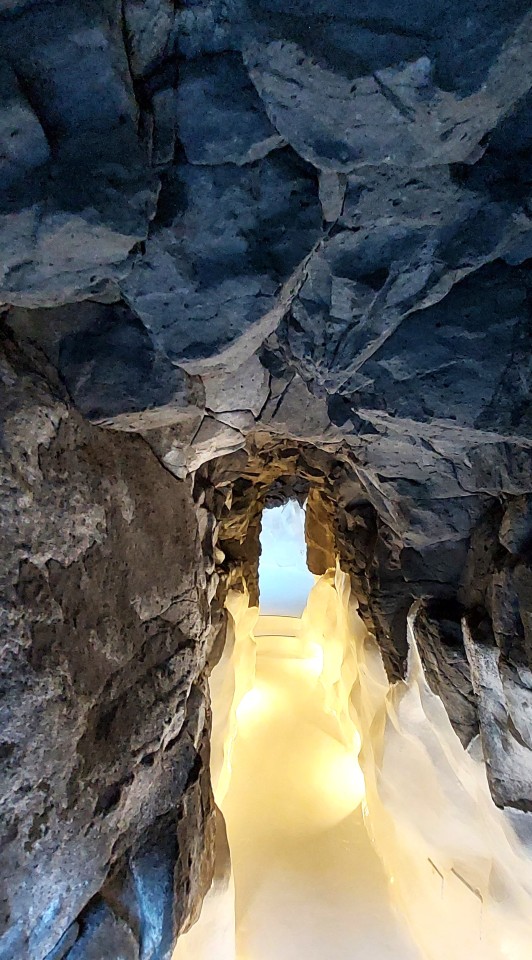
Fondacion Manrique
César Manrique war Visionär, Diktator und Lebenskünstler, er war Andy Warhol, Fidel Castro und Gunther Sachs in einer Person. Ob Gärten, Museen, Villen, Restaurants, Aussichtswarten, Windspiele oder Landschaftsskulpturen, Manrique hat die Insel geprägt. Wer hat seinen Landsleuten schon den Farbton ihrer Häuser vorgeschrieben. Die Farben Weiß und das spezielle „Manrique-Grün“ gehören zum gesamtheitlichen Konzept. Und die Bewohner, sie ließen sich’s gefallen. Kaum ein Land wurde so nachhaltig von einem Künstler entworfen und geformt, wie Lanzarote, und – der Geniestreich ist gelungen. Es gibt wohl niemanden, der dem widerspricht. Da verwundert es auch nicht, dass sogar der Flughafen den Namen „César Manrique“ trägt. Kaum, dass der glitzernde Ferienvogel den Boden der Insel berührt, werden die Passagiere darauf hingewiesen, in wessen Hand sie sich befinden. Und wenn wir schon beim „Verkehr“ sind: Auf den Straßen fahren Autos, deren Lackierung eines der knallbunten Gemälde aus des Meisters Werkstatt zeigt…
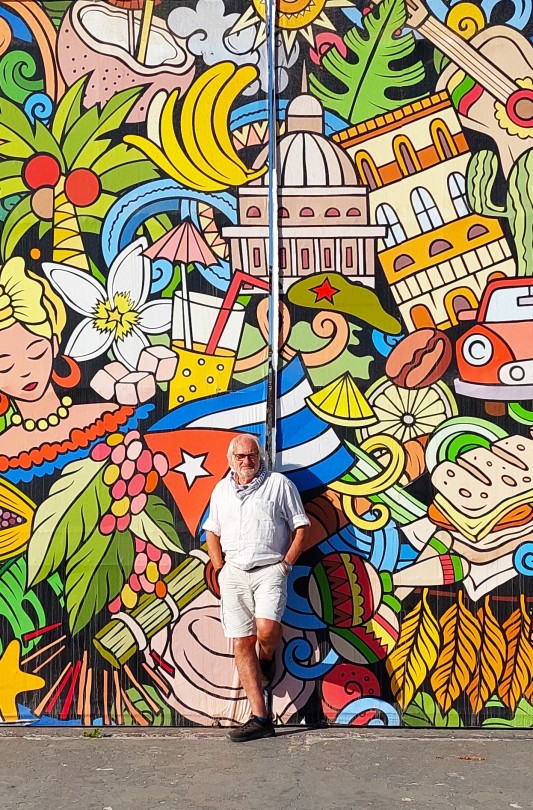
Arrecife, Autor im Bild
Der Insel-Genius hat mehr erreicht, als je ein Künstler vor ihm. Blickt man auf die wild zerklüftete Küste bei El Golfo oder auf die pittoreske Mischung zwischen dem omnipräsenten schwarzen Lavagestein und dem teilweise aufgeschütteten weißen Sand der Strände – vermutet man sogar hier die Handschrift Manriques. Auch in Sachen Ökologie, Stadtarchitektur und Umweltpolitik stößt man auf seine Einflussnahme. Werbetafeln in- oder ausländischer Konzerne sucht man auf der Insel vergeblich - was einem gar nicht sofort auffällt – genau wie das gänzliche Fehlen von Touristen-Hochburgen oder anderen nicht mehr wieder gut zu machenden Bausünden. Der weitgreifende Kunstanspruch des Ausnahmekünstlers prägt Lanzarote ebenso wie die gewaltigen Vulkankegel.
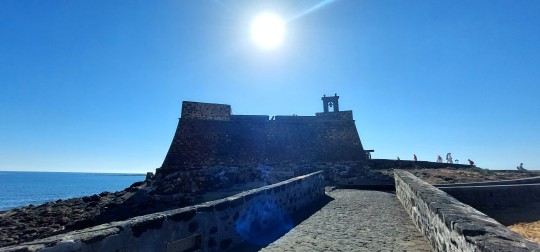
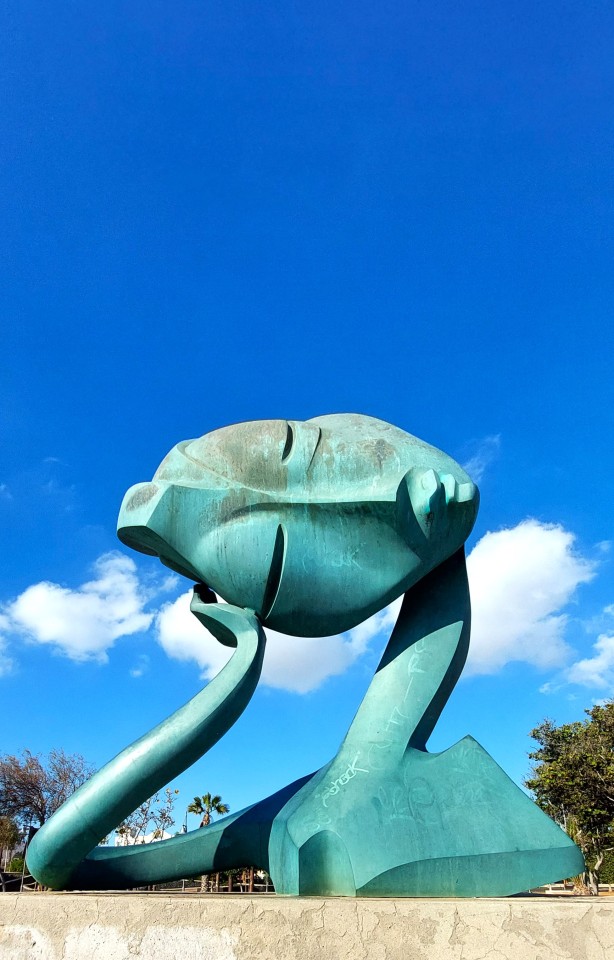
Wundert es, dass sich der umtriebige Herr Architekt nicht nur Freunde gemacht hat? Seine Künstlerkollegen wurden von der Übermacht des Maestros erdrückt, und auch die Immobiliensachverständigen formierten sich mit der Zeit gegen Manrique, stand der doch bei beinahe jedem zweitem Bauprojekt auf der Bremse – und die Inselregierung folgte ihm. Keinesfalls wollte er zulassen, dass seine geliebte Insel am Altar des Massentourismus geopfert wird. Die ästhetische und ökonomische Integrität Lanzarotes ging ihm über alles. Die mächtigen Geister die er dabei zu Hilfe rief, wurde er bald schon nicht mehr los und je kostbarer die Insel wurde, desto mehr boomte sie auf den internationalen Ferienbörsen. Je exklusiver, desto begehrter. Immer mehr Menschen wollten teilhaben an den Gossip-Geschichten der bunten Illustrierten über das Insel-Lotterleben des Meisters. Die Anzahl der Übernachtungen explodierte, sanfter Tourismus hin oder her.
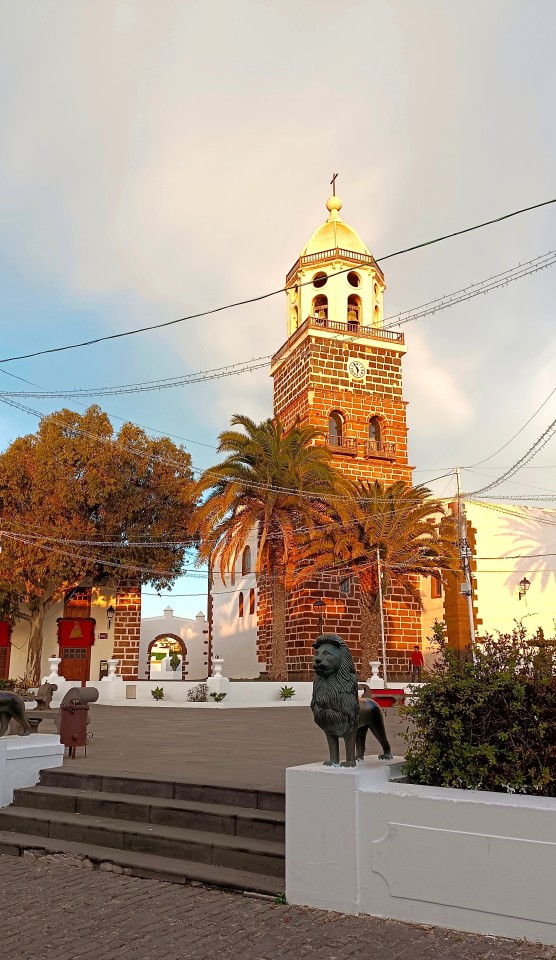
Teguise, Plaza de la Constitución
Der Unfalltod Manriques am 25. September 1992 erschütterte die Insel nachhaltig, von den internationalen Klatschspalten ganz zu schweigen. Sogar das Ende war an Theatralik nicht zu überbieten: Mit seinem Jaguar raste der Inselkaiser auf eine Kreuzung zu, unmittelbar darauf wurde er von einem schweren Geländewagen „abgeschossen“. Schenkt man der Insel-Fama Glauben, schlug die Bau-Mafia zu. Sogar sein Tod bewirkte Erstaunliches: Seither gibt es auf Lanzarote keine Überlandkreuzungen mehr, sie wurden in Kreisverkehre umgewandelt, in deren Mitte zumeist große Mobiles aus des Märtyrers Hand stehen, die sich in die verschiedensten Windrichtungen drehen und wenden. Symbolträchtiger wurde wohl noch keinem Künstler gedacht.

Villa LagOmar
Die Sehenswürdigkeiten der Insel-Mitte:
César Manrique Fondacion – Das erste Wohnhaus Manriques ist als Museum begehbar. Wer wissen will, was Geschmack bedeutet, muss dorthin.
Arrecive – Hafen und Hauptstadt. Weit mehr als nur Meer-Promenade, Castillo San Gabriel, Islote de Femina und Castillo de San José (inkl. Kunstmuseum)
Teguise – Zauberhafte, ehemalige Inselhauptstadt mit prächtigem Hauptplatz vor der „Iglesia de Nuestra Señora de Guadalupe“, in der eine Christusfigur mit Langhaarperücke schwebt und eine Büste des spanischen Literatur-Nobelpreisträgers steht („Durch seine Gedanken kann der Mensch die Wahrheit entdecken, die verborgen in der Welt umgeht“)
San Bartolomé – Besuchenswerte Stadt in der geografischen Mitte Lanzarotes. Vor dem Rathaus und der Pfarrkirche fühlt man sich um Jahrhunderte zurückversetzt.
Tao – hier und rundum in den Nachbarorten finden die populären Ringkämpfe der Giganten, den „Luchadores“ statt, z.B. in der Arena „Lucha Canaria“ statt. Keinesfalls versäumen!
Villa LagOmar in Nazaret - „Dr. Schiwago“ Omar Sharif kaufte die Traumvilla und verspielte sie noch am selben Abend beim Bridge. Nicht nachahmens- aber empfehlenswert.
El Jable, alttestamentarisch anmutende Sandwüste beim Örtchen Soo.
Die Wunderwelt der spektakulären Gesteinsformationen „Las Grietas“ in den Montana Blanco ist Lanzarotes Antwort auf den „Grand Canyon“ Arizonas.
Surf-Süchtige müssen zum Wind- und Wellenparadies „Caleta de Famara“.
Der „Playa de Matagorda“ ist die Touri-Einflugschneise: Düsenjets zum Anfassen!
El Jable, die Sandwüste – Las Grietas – Stratified City – Caleta de Famara:
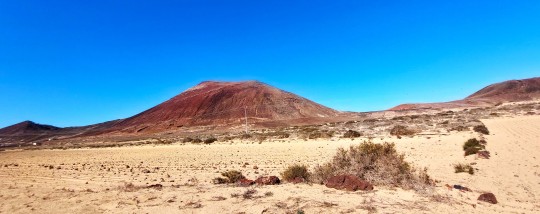

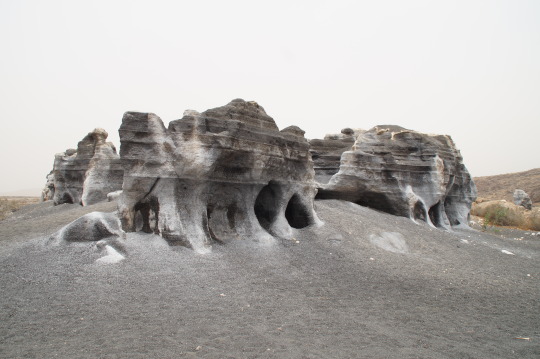

#michael schottenberg#schotti#schotti unterwegs#schotti to go#orf#spanien#kanarische inseln#kanaren#lanzarote#arrecife#césar manrique#fundacion manrique#casa manrique#camilo josé cela#villa lagomar
2 notes
·
View notes
Text
Alfonso Eljach un alcalde con inmunidad
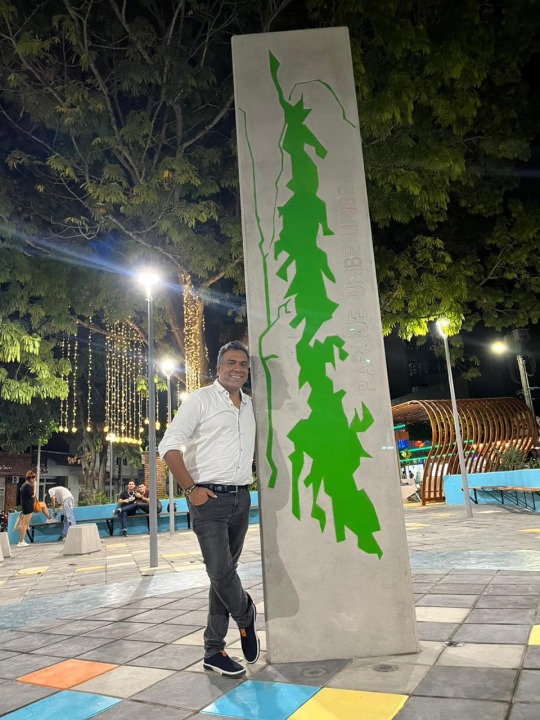
El alcalde de Barrancabermeja Alfonso Eljach Manrique posa sonriente para la foto oficial en uno de los tantos parques entregados a la comunidad. Luce tranquilo y relajado.
Y tiene porque estar así. Durante sus cuatro años de mandato supo estrategicamente manejar 'la culebra' para que a final de su período se sintiera de esa manera.
Y no precisamente porque haya tenido aceptación, pues en las encuestas que realizaron firmas encuestadoras inscritas en el Consejo Nacional Electoral, que fueron contratadas para analizar la percepción de la comunidad de los candidatos a la Alcaldía, hubo un espacio para conocer lo que opinaban los encuestados sobre el grado de aceptación de su mandato y tuvo una evaluación negativa que superó el 75 por ciento.
Según Eljach, él le cumplió a Barrancabermeja y pone de ejemplo varios hechos: la construcción del Mercado Pesquero, la Casa de la Mujer Empoderada, el Multiparque del barrio La Esperanza, obras de reposición de acueducto y alcantarillado, el cambio de andenes en las vías calle 50 y calle 49, la apobación del POT,la remodelación de parques y polideportivas, la aprobación del Fondo de Infraestructura Educativa.
Sin embargo, tampoco en ese gobierno hubo la construcción del Centro Administrativo Municipal, ni lideró la construcción de la terminal de Transporte. Y Barrancabermeja pasó a ser de las pocas ciudades en el mundo sin transporte urbano de pasajeros.
En cuanto a sus logros tengo mis opinones en tres de ellos. Lo del Fondo de Infraestructura educativa lo motiva más una protesta que se convirtió en un paro estudiantil sin precedentes el cual puso en jaque a la Administración municipal. Y respecto a la Casa de la Mujer Empoderada los créditos fueron totalmente de su esposa.
En cuanto al POT, increiblemente tres administraciones que le precedieron no pudieron aprobarlo,aunque la de Dario Echeverri Serrano, su antecesor, había llevado el proyecto hasta la instancia de la CAS, que es el paso previo a la aprobación del Concejo, pero finalizó su gobierno sin poderlo aprobar pues habían más de 60 observaciones que le plantearon desde el organismo ambiental y que finalmente no fueron superadas, es decir el POT ya estaba en la puerta del horno cuando Eljach llegó y hubiera sido el colmo de la desfachatez si pasaba sin aprobarlo pues desde el 2002 estaba desactualizado.
Igualmente, aunque se ufana de las obras de recuperación del muelle es necesario aclarar que desde el 2015 se viene insistiendo en esta tarea y solo se cristlizó durante su gobierno porque finalmente la licitación,que había sido declarada desierta, tuvo por fin un interesado que accedió al contrato licitado por Cormagdalena por $17 mil millones.
Las expectativas con Eljach eran muchas pues representaba los intereses del sector privado, se le veía como un empresario, pero resultó ser el politiquero encantador de serpientes con las mañas que los electores honestos pretendieron castigar pues nuevamente antepuso los compromisos políticos a los de ciudad.
Siguió con la maña de arrendar inmuebles para el funcionamiento de las oficinas de la Alcaldía, cuando paralelamente pudo gestionar la construcción de un CAM, y todo para cumplir compromisos de campaña. Se dilapidaron recursos tercerizando la contratación con fundaciones,corporaciones y organiaciones no gubernamentales que se dieron un festín con los recursos de la cultura, el deporte y otras áreas.
Las épocas más altas de contratación de mano de obra se dieron en época de campañas políticas: la del Congreso y la de Alcaldía y lo peor, muchos de esos contratistas por prestación de servicios eran originarios de otras ciudades. Demostró, eso sí, que con voluntad política pudo reducir el desempleo pero no lo hizo por esta convicción sino por intereses políticos.
Como todo mandatario autoritario y egolatra consideró que el desarrollo de la ciudad se hacía remodelando parques y transformando andenes,olvidandose de la problemática de una ciudad estancada en el tiempo, con las mismas vías de acceso y de comunicación vial, ademá de problemas drogadicción que se evidencian en las calles y especificamente en el sector del comercio y a una cuadra de la Alcaldía donde se observa el desalentador panorama de consumidores de alucoinogenos y habitantes de la calle.
Ni siquiera contempló remodelar un Bien de Interés Público como el inmueble donde funcionaba la Escuela Nomal Cristo Rey, localizado frente al vetusto palacio Municipal, hoy en ruina y sitio predilecto para el consumo de estupefacientes, cuando pudo ser esa edificación que debió reunir las oficinas de la Alcaldía que hoy pagan arriendo.
Aunque contó con aliados en el Congreso que llevaron a ley la creación del Distrito de Barrancabermeja y la Zona Especial Económica, que contempla exenciones tributarias para los inversionistas y que rigen hasta el 2025, no implementó lo primero y se va a terminar el tiempo de vigencia de esa importante norma que bien pudo atraer inversionsias a Barrancabermeja pero no la promovieron con fundamento.
Barrancabermeja perdió el liderazgo regional y municipios pequeños como Yondó, en Antioquia, la superaron en esta materia. Como colofón cierra el periódo con un desempleo del 19 por ciento, muy por encima de la media nacional que es de 9,2, según el DANE.
Con 120 homicidios, que es un reporte negativo para una ciudad de 188 mil habitantes y cayendo estrepitosamente en materia de competitividad, pese a ser la ciudad donde opera la refinería de petróleos más importante del país.
Eljach sale salpicado por denuncias de corrupción pero está tranquilo porque sabe que tiene inmunidad. El ha sido astuto: empleó en provisionalidad al esposo de la Directora Regional de Fiscalías que aunque es la 'fiscal de hierro' en su lucha contra las bandas criminales, a las cuales les ha asestado golpes contundentes, pero con un 4 por ciento en resultados anti corrupción.
Con una Procuradora Provincial que se presume es de su corazón pues incluso hizo parte, con su visto bueno, de la terna para contralora municipal en esos concursos polémicos y supuestamente amañados que están a cargo de un Concejo genuflexo, conformado en su mayoría por concejales cuyas campañas lo apoyaron mayoritariamente y que permitieron que el alcalde impusiera e impulsara sus proyectos sin ninguna objeción ni control político posterior.
Un concejo al que se dio el lujo de no asistir ni a las clausuras ni a las instalaciones de la gran mayoría de las sesiones, que no ejerció control político, que le aprobó de todo. Y el colmo de la posición arrodillada del Concejo hacia el alcalde, pese a que ambos fueron elegidos porel voto popular, se aprecia en la foto en la que se puede observar al presidente del Concejo Jhon Blert Corena entregandole un pergamino pero para hacerlo debió asistir a uno de los tantos actos públicos de entrega de parques que viene realizando en el último mes de su mandato. Normalmente ese reconocimiento se realiza es en las instalaciones del Concejo.
Durante la pandemia, Eljach empezó a mostrar su ambición, es así como en la investigación interdisciplinaria liderada por la Contraloría General, su administración ejecutó contratos de suministros con notables sobrecostos. Hubo acciones fiscales en contra de algunos involucrados pero la investigación penal y administrativa no avanza y se dice es por las supuestas influencias de algunos congresistas que en su momento eran parte de la coalición de gobierno nacional las cosas no pasaron a mayores.
Y ni hablar de la Contralora, quien a proposito también era de su corazón pues fue Prestadora de Servicios en el primer año de gobierno y que de seguro tapara todo aquello que de alguna manera pudieran afectar a ese amigo.
Y así quien no sale tranquilo, relajado y confiado que su mandato sin duda contó con inmunidad.

0 notes
Text
Origen colonial y arquitectura neoclásica en Colima.

A pesar de ser Colima una de las primeras fundaciones en la Nueva España, a partir de su conquista en 1523, prácticamente no existe en pie ningún ejemplo de su arquitectura virreinal, salvo por las ruinas del ex convento de Almoloyan, construcción franciscana del siglo XVI, de la que se conservan una torre y parte del muro del atrio.
La razón de esta orfandad arquitectónica se debe principalmente a la inestabilidad del suelo, que está en constante movimiento por fallas tectónicas y la cercanía de un volcán que domina el escenario con la belleza de su geometría y sus permanentes achaques eruptivos. Con terquedad admirable, los habitantes de Colima, durante siglos han edificado y vuelto a construir lo que la naturaleza se ha empeñado en destruir.
Uno de los edificios más significativos y de enorme tradición que aún sobreviven en el corazón de la ciudad es el Portal Medellín, construido en 1860 por los maestros de obra Antonio Alderete y Lucio Uribe. Utilizado durante muchos años en las ceremonias de las fiestas patrias, la parte comercial ha servido para instalar cantinas, billares, paleterías e infinidad de negociaciones. Construido en dos niveles, destina la planta baja para comercios y la alta como sitio habitacional.
En el lugar en el que durante doscientos años existieron las Casas Consistoriales, se construyó en 1877 un edificio destinado a Palacio de Gobierno. Este se ha conservado prácticamente intacto en cuanto a la disposición arquitectónica con dos plantas rectangulares de 47 por 60 m, en ambas se ubican las oficinas y dependencias gubernamentales. Su fachada es de estilo neoclásico, y la portada del edificio está compuesta por tres cuerpos.
Otro edificio ubicado en el Centro Histórico es el Teatro Hidalgo, cuya construcción obedece al importante tráfico comercial de firmas alemanas que se dio a partir de la apertura del puerto de Manzanillo, en donde desembarcaban compañías de saltimbanquis, acróbatas, toreros, tirititeros, cómicos de la legua y compañías dramáticas y de zarzuela con destino a Guadalajara y a la Ciudad de México. En Colima hacían escala para descansar de las duras jornadas de viaje y aprovechaban para presentar su espectáculo. En este teatro se presentaban con tanto éxito al público ávido de diversiones como lo fueron los colimenses decimonónicos. Su construcción, que inició en 1871, estuvo a cargo del maestro Lucio Uribe.
Durante el siglo XIX, los ríos que cruzan Colima como el Manrique y el Colima, eran de respetable caudal, sobre todo en épocas de lluvia, razón por la cual la ciudad construyó una serie de puentes en su recorrido, de los cuales sobresalen en la actualidad dos de ellos: el Principal, edificado a principios del siglo sobre la calle Torres Quintero y el Zaragoza construido en 1873, que es uno de los más interesantes de la capital.
Otros edificios interesantes en el Centro Histórico son la casa de don Blas Ruiz o Palacio Federal, el edificio que ocupa el Monte Piedad, la casa que habitó Hidalgo o el Sindicato de Trabajadores del Gobierno del Estado, la casa Juárez, el ex consulado Alemán, el edificio de la Cocordia, el Mercado Enrique O. de la Madrid y el ex hospital de San Juan de Dios.
En cuanto a templos, sobresalen la Catedral, el templo de la Salud y la parroquia de San Felipe de Jesús; las parroquias de San Fransisco de Asís en Villa de Álvarez y la de San Miguel en Comala.
Durante el porfiriato, destacan en el Estado haciendas ganaderas, azucareras, alcoholeras, algodoneras, cafetaleras y salineras, cuya producción fue motor importante para la economía de la época. De este periodo sobresalen algunas haciendas por sus características arquitectónicas como las de Buenavista, El Carmen, La Estancia, Capacha, San Antonio, Nogueras, El Cóbano y San Joaquín. Finalmente, vale la pena mencionar dos edificios antagónicos en lo referente a su tecnología; el primero tuvo un sistema constructivo tradicional de carácter efímero; se hizo sin planos y esquemas previos, tan sólo con el entusiasmo de una comunidad que hace más de 300 años se consagró a la protección de San Felipe de Jesús, santo protector de la ciudad contra temblores y erupciones. A él se dedican las fiestas solemnísimas en donde se erige durante quince días la plaza de toros más original de la región: La Petatera.
0 notes
Photo
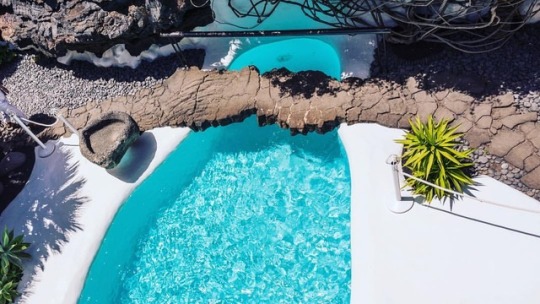
Fundacion Cesar Manrique Pool #cesarmanrique #art we #love the #lanzarote #paradise and show you the #beautiful #canarias #summer be #happy and have #fun with your #family and #friends at the #beach and enjoy your #holidays #lanzaroteworld #discoveryoursmile #thomascook #expediapic #holidaycheck this is one of the #photooftheday #cute #pretty #cool #sweet and #nature #follow us to see the next #picoftheday (hier: Fundación Cesar Manrique)
#beach#pretty#summer#family#paradise#fun#follow#expediapic#art#lanzarote#lanzaroteworld#love#cesarmanrique#picoftheday#discoveryoursmile#sweet#cool#holidays#thomascook#nature#beautiful#holidaycheck#friends#photooftheday#cute#happy#canarias
3 notes
·
View notes
Photo
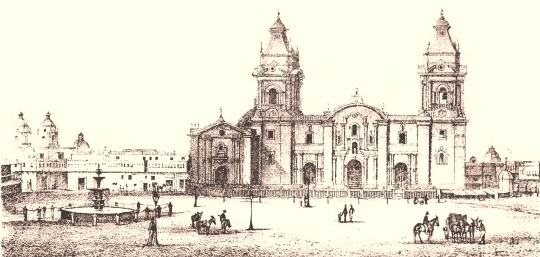
049 – Año 1563 – El Diario de Inés Muñoz – Fichas: (713-739) – La Consolidación – Expediciones, Fundaciones, Personajes.
713 – (1563 – 19 de marzo) Se promulga el Edicto de Amboise que pone fin en Francia a la Primera Guerra de Religión. Las Guerras se dieron en una reforma y en una contrarreforma este fue el comienzo de las Guerras de religión de Francia.
Las Guerras de religión de Francia fueron una serie de enfrentamientos civiles que se desarrollaron en el reino de Francia y en el reino de Navarra durante la segunda mitad del siglo XVI. Se distinguen hasta ocho guerras distintas acontecidas entre 1562 y 1598, si bien la violencia fue constante durante todo el periodo.
El detonante de las Guerras de Religión fueron las disputas religiosas entre católicos y protestantes calvinistas, conocidos como hugonotes, exacerbadas por las disputas entre las casas nobiliarias que abanderaron estas facciones religiosas, en especial los Borbón y los Guisa.
714 – (1563 – 30 de mayo) Fundación de Boconó Estado Trujillo en Venezuela.
715 – (1563 – 23 de abril) Colocación de la primera piedra del Escorial, El Real Monasterio de San Lorenzo de El Escorial es un complejo que incluye un palacio real, una basílica, un panteón, una biblioteca, un colegio y un monasterio. Se encuentra en la localidad española de San Lorenzo de El Escorial, en la Comunidad de Madrid, y fue construido entre 1563 y 1584.
716 – (1563 - 17 de junio) Fundación española de Ica, por Jerónimo Luis de Cabrera, con el nombre de Villa de Valverde del Valle de Ica, luego de constantes sismos que destruían la Villa se tenían que cambiar de lugar y finalmente en 1633, se le reconoció como ciudad y se estableció en el lugar que actualmente ocupa. Se denominaría San Jerónimo de Ica en honor a su fundador.
717 – (1563 - 8 de julio) Fundación de La Villa de Victoria de Durango, en el "Valle del Guadiana" por Francisco de Ibarra en lo que hoy es el estado de Durango, México
718 – (1563 - 5 de agosto) Descubrimiento de las minas de Huancavelica.
719 – (1563- 29 de agosto) El rey Felipe II, en la ciudad de Guadalajara, dictó una Real Cédula por el cual se creó la Presidencia y Real Audiencia de Quito en Ecuador.
720 – (1563 - 11 de noviembre) El Concilio de Trento promulga el Decreto Tametsi, que regulará hasta 1947 la forma del matrimonio canónico.
721 – (1563 - 27 de noviembre) Fundación de la Ciudad de Cartago a cargo de Juan Vázquez de Coronado
722 – (1563 - 4 de diciembre) Se clausura oficialmente el Concilio de Trento (iniciado 13 de diciembre de 1545).
723 – (1563) El Inca Garcilaso de la Vega. Usaba todavía el nombre de Gómez Suárez de Figueroa, hasta que, en 1563, adoptó el de su padre, Garcilaso de la Vega. Fracasado su intento de regreso al Perú, se radica definitivamente en la Península. En este contexto se fue españolizando y llegó a ser perfectamente bilingüe.
724 – (1563) Con la llegada de los españoles a estas tierras y la fundación de Villa de Valverde - Hoy la ciudad de Ica - se sembraron viñedos en toda la extensión de este valle.
725 – (1563) El minero Amador de Cabrera descubre unos ricos yacimientos de mercurio en Huancavelica en la Sierra del Perú.
726 – (1563) El virrey del Perú don Diego López de Zúñiga funda la ciudad de Santiago de Miraflores de Zaña a 50 Kilómetros de la ciudad de Chiclayo.
727 – (1563) Diego López de Zúñiga y Velasco, nació en Burgos, en 1500 y falleció en la Ciudad de los Reyes, el 19 de febrero de 1564, V conde de Nieva y caballero de la Orden de Santiago, fue el 4.º virrey del Perú, cargo que ejerció de 1561 hasta su asesinato ocurrido en 1564, muerte que hasta hoy día está teñida de misterio.
728 – Debido a la muerte repentina de Diego de Acevedo y Fonseca, quien preparaba su viaje para hacerse cargo del Virreinato del Perú en reemplazo del Marqués de Cañete, el rey Felipe II lo reemplazó por el Conde de Nieva, despachando el día 15 de diciembre de 1558 las provisiones que lo nombraban como virrey, gobernador y capitán del Perú, así como presidente de la Real Audiencia de Lima.
729 – Por problemas administrativos se retrasó su viaje al Perú, hasta que al fin, rodeado de un numeroso grupo de oficiales, deudos y protegidos, partió el 28 de enero de 1560 desde el puerto de Cádiz.
730 – Atravesó el istmo de Panamá en mayo y tras superar unas fiebres tropicales, arribó al puerto de Paita, en la costa norte peruana, desde donde siguió el viaje a Lima por tierra. Hizo su entrada oficial en la capital del Virreinato el 17 de abril de 1561.
731 – El Conde de Nieva se distinguió por sus hábitos cortesanos, su desidia para atender los negocios públicos y su codicia. Lima se transformó en escenario de una suntuosa vida cortesana, con ceremonias de espléndido boato, capilla musical y lucimiento de trajes aparatosos, todo lo cual fue reglamentado por el virrey mediante ordenanzas. Su mandato solo duró tres años.
732 – El asunto más importante y complicado con el que tuvo que enfrentarse el Conde de Nieva fue si los indios y las tierras podían ser otorgados en perpetuidad a los encomenderos. Los tres comisarios designados para examinar este problema eran Briviesca de Muñatones, Vargas de Carbajal y Ortega de Melgosa.
733 – El virrey López de Zúñiga hizo mejoras importantes en la disposición urbanística de la capital. Mencionaremos las más importantes:
734 – Se construyeron los primeros portales de la Plaza Mayor de Lima.
735 – Adjudicó a la ciudad el 16 de noviembre de 1562 en calidad de “propios” un terreno contiguo al de palacio en el que se formaron tiendas y cajones destinados a convertirse en pescadería, bodegones y tabernas.
736 – Estableció un primitivo sistema de alcantarillado y de desagüe en la capital.
737 – Expidió un reglamento sobre la plantación de árboles en el interior de las casas. Fue en esos años en que se plantaron los primeros olivos en Lima.
738 – Inició la obra de dotar a la ciudad de agua potable traída desde un manantial aledaño, pues hasta entonces no se había usado sino el agua del río. Como la obra demorara mucho tiempo y no alcanzaran los recursos del erario público para terminarla, se resolvió aplicar un impuesto sobre las carnes, llamado “impuesto de la sisa”. El agua llegó a la fuente de la Plaza Mayor años después.
739 – La muerte del virrey tuvo lugar en medio de extrañas circunstancias. Sucedió en la madrugada del 19 de febrero de 1564, y la versión que circuló fue que falleció de un ataque cerebrovascular, que le sobrevino cuando se hallaba durmiendo. Sin embargo, pronto se supo que su muerte no había sido natural y circuló la versión de que lo habían encontrado agonizante, en la calle de Trapitos, cercana al Palacio Virreinal. Según esta versión, había sido golpeado rudamente luego de deslizarse furtivamente desde el balcón de una casona mediante una escala de mano, tras haber tenido un encuentro galante con Catalina López de Zúñiga, esposa de Rodrigo Manrique de Lara y a la vez prima del virrey. Revista El Diario de Inés Muñoz - [email protected]
1 note
·
View note
Photo

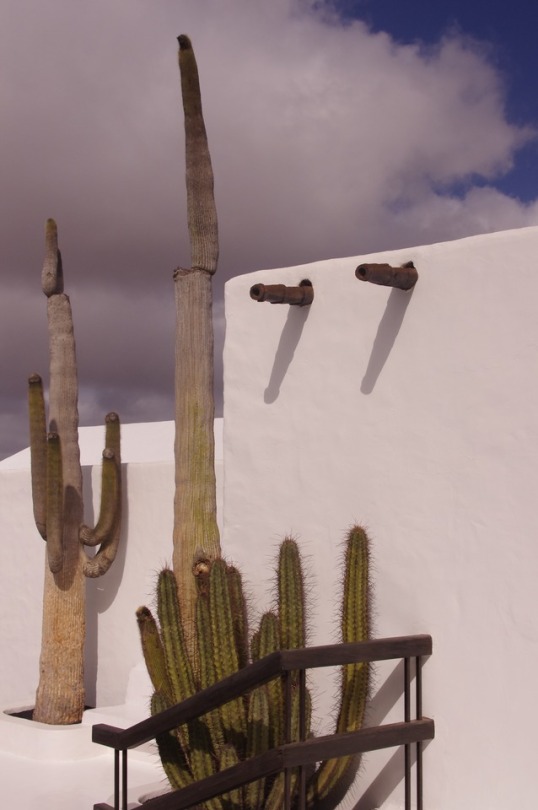



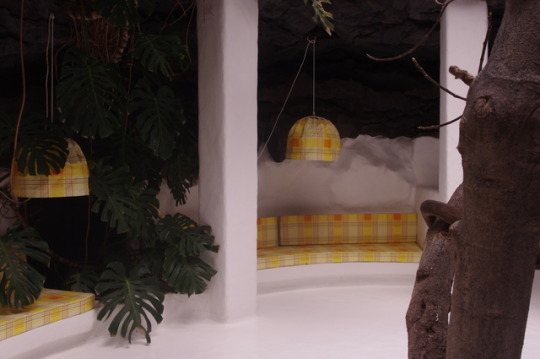
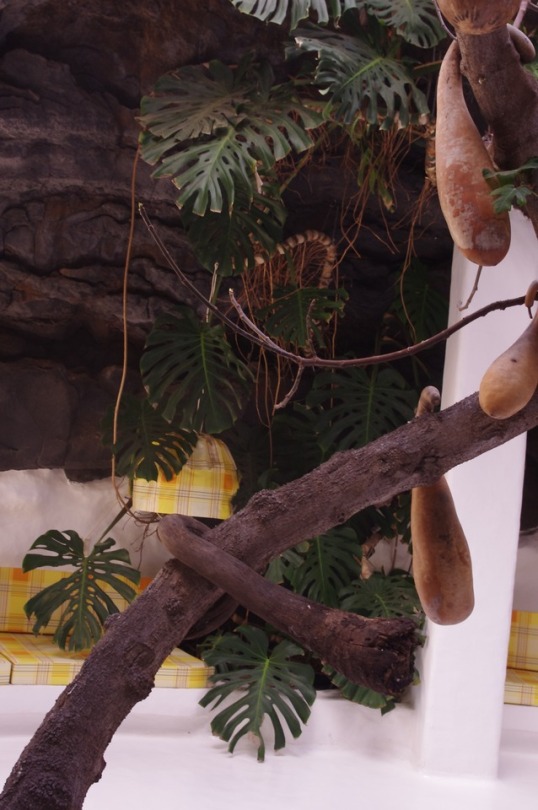


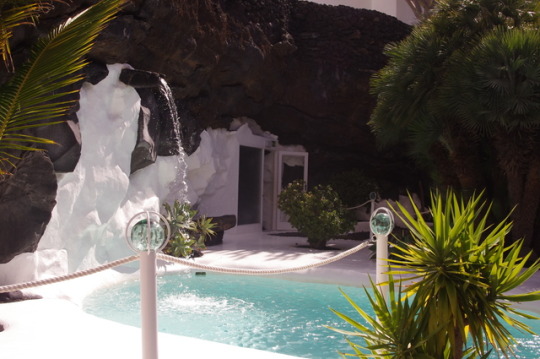
#cesar manrique#architect#architecture#photo#photography#lanzarote#spain#canary islands#island#espagne#travel#trip#holiday#fundacion cesar manrique#garden#inside#outside#volcano#colors#plants
1 note
·
View note
Photo

Invitación a medios de comunicación y a nuestra escena metalera y rockera a unir lazos de hermandad a través de nuestros hermanos del Metal, Giuseppe Risica Carella (Pino) y José Ignacio López Gastón (Nacho). Escritores amantes del Metal y comprometidos con la escena metalera del Perú, en la presentación de su libro: ESPÍRITU DEL METAL.
Con la presencia de uno de sus autores José Ignacio López Ramírez Gastón. Metalero de corazón y bibliómano, narrando testimoniales propios y académicos sobre el género, documentando la existencia de textos extensos y sistemáticos sobre la historia del metal peruano. Así José Ignacio López Ramírez Gastón (profesor de la Pontificia Universidad Católica del Perú y del Conservatorio Nacional de Música), investigador y autor del libro con Giuseppe Risica Carella (Periodista y Locutor de AveRock, maganement de bandas, eventos y en la producción de discos Sonidos Latentes Producciones, marketing, Cuero Negro Magazine, etc.)
“Espíritu del Metal. La Conformación de la Escena Metalera Peruana (1981 - 1992)”
El libro abarca los primeros años de la escena metalera en Perú, desde su aparición en 1981 hasta 1992, destacando los hechos que de acuerdo con los autores definen a la Primera Ola del Heavy Metal Peruano (POHMP), y su contribución en la historia del rock peruano. El libro documenta el origen y evolución de grupos como la banda fundacional Oxido, Silex, Praxis, Sacra, Almas Inmortales, M.A.S.A.C.R.E., Hadez, Mortem, Kranium, entre muchas más.
INVITADOS ESPECIALES Y AMANTES DE NUESTRA ESCENA DEL METAL: Roy Khamus legacy (METAL CORROSIVO RADIO), Lety La Gitana (CARRUSEL RADIO), Miguel Ness Romero (TEMPLE METAL RECORDS), David Manrique (MANRIQUE PRODUCCIONES), Paco El Mago Rodríguez (TEATRO DE LOS SUEÑOS).
https://www.facebook.com/events/428843887658552/
0 notes
Photo
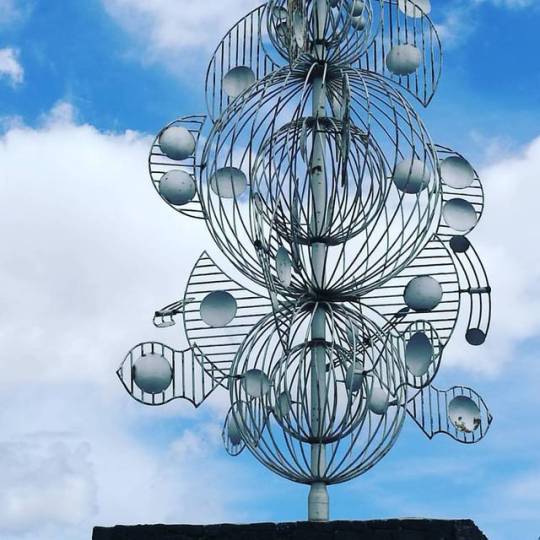
Manrique sculpture Fundacion Manrique, Lanzarote #art #sculpture #Manrique #lanzarote #culture #contemporaryart #modernism #original #pictures #picoftheday
18 notes
·
View notes
Video
Producto benéfico!!! #porunavejezdigna Hermosa inspiración que ayuda a los demas!!! Siguelos 👉👉👉 @cmhandmade_ Reposted from @cmhandmade_ Hola! me llamo Camila Manrique Mancero, hoy les quiero contar un poco sobre mí y de mi propósito✨ Mi pasión por este arte comenzó a mis 9 años, cuando comencé por diversión a hacer pulseritas, para luego venderlas a mis amigos y familia. Decidí estudiar diseño de Joyas💎, me especialice cada vez más en nuevas técnicas y tendencias 💫 A mis 17 años creé mi propia marca @cmhandmade_ , con la finalidad de poder trasmitir mi inspiración por medio de los diseños de mi bisutería y que puedan compartirla a alguien que quieran o un auto-regalo. Luego me di cuenta que me hacía falta mi otra pasión, que era ayudar de alguna manera a los demás💗. Es por eso que me uní a @fundacionclemencia , fundación que ayuda a las personas de la tercera edad que han sido abandonadas, para así donar un porcentaje por cada venta realizada✨.En mi caso me inspiró mi abuelito 👼 , siempre he creído que ellos son parte fundamental de nuestra vida. Espero que nos sigamos conociendo un poco más y los invito a mi cuenta @cmhandmade_ #marcaconpropósito #cmhandmade_ #handmade #Bisutería #DiseñosGuayaquil #pulseras #inspiración #brand #ayudar #fundacionclemencia #bisuteriahechaamano #bisuteríaecuador #diseñospersonalizados - #regrann (en Fundacion Clemencia & Asilo Sofia Ratinoff de Solimano) https://www.instagram.com/p/CBehewMlIEu/?igshid=j89y6l1xxk4d
#porunavejezdigna#marcaconpropósito#cmhandmade_#handmade#bisutería#diseñosguayaquil#pulseras#inspiración#brand#ayudar#fundacionclemencia#bisuteriahechaamano#bisuteríaecuador#diseñospersonalizados#regrann
0 notes
Text
Because i encountered a nice publication on this obscure painter , i decided to write a blog on the artist. The main part of this text comes fromT the Cesar Manrique devoted site. They did an excellent job in making more information available on Manrique
César Manrique Cabrera was born on April 24,1919 in Puerto Naos, Arrecife (Lanzarote), the son of Francisca y Gumersindo. His father was a food merchant and his grandfather a notary public. César preceded his twin sister Amparo by just a few minutes. He had another sister and brother all of whom are alive today. Don Gumersindo came from Fuerteventura of good family background and emigrated to Lanzarote.
The Manriques constituted a typical middle class family, without financial burdens. In 1934, his father bought a lot in Caleta de Famara and built a house next to the ocean. This house left a visible impression that lasted his lifetime, he remembered with joy:” My greatest happiness is to recall a happy childhood,five month summer vacationsin the Caleta and the Famara beach, with its eight kilometers of clean and fine sand framed by cliffs of more than four hundred meters high that reflected on the beach like in a mirror. That image has been engraved in my soul as something of extraordinary beauty that I will never forget in all of my life.”
He participated as a volunteer in the Spanish Civil War on Franco’s side. His experience of the war was atrocious and he refused to talk about it. In the summer of 1939, once the war was over, César returned to Arrecife. He returned still wearing his military uniform. After greeting his mother and siblings, he went up on the flat roof, took off his clothes, agrily stepped over them, sprayed them with petroleun and burned them.
At the end of the Spanish Civil War, he entered the La Laguna University to study Technical Architecture, which he would abandon after two years. In 1945 he travels to Madrid and enters with a scholarship, to the Academia de Bellas Artes de San Fernando, where he would graduate as Art Professor and painter.
In the Fall of 1964, following the advise of his cousin Manuel Manrique, a New York Psychoanalyst and writer, Cesar traveled to that city where he stayed until the summer of 1966. He was the guest of Waldo Diaz-Balart, a Cuban painter, who lived in the Lower East Side, at the time, a neighborhood of artists, journalists, writers, and bohemians. Later he was able to obtain through his cousin Manuel’s friendship with the Director of the Institute of International Education, which was sponsored by Nelson Rockefeller. a generous grant which allowed him to rent his own studio and produce a number of paintings which he exhibited with success in the prestigious New York gallery “Catherine Viviano” .
While in New York, he would write his friend Pepe Dámaso “(…) more than ever I feel true nostalgia for the real meaning of things. For the pureness of the people. For the bareness of my landscape, and for my friends (…) My last conclusion is that MAN in N.Y. is like a rat. Man was not created for this artificiality. There is an imperative need to go back to the soil. Feel it, smell it. That’s what I feel.” He began to feel nostalgia for Lanzarote.
” When I returned from New York, I came with the intention of turning my native island into one of the more beautiful places in the planet, due to the endless possibilities that Lanzarote had to offer. ” .
And this is the present reality: It is impossible to imagine Lanzarote as it stands today without César Manrique. He was a painter, sculptor, architect, ecologist, monument preserver, construction advisor, planner of urban developments, outliner of landscapes and gardens.
Those who knew Manrique only superficially ignored the load of puritanism that ruled his conduct. Manrique was really a frugal man, he didn’t drink, didn’t smoke and didn’t allow others to smoke next to him, he regularly went to bed very early and got up at dawn, and began work in his studio very early.
He died at the age of 73 in a tragic car accident, on the 25 of September 1992, next to the Fundacion, near Arrecife. The irony of fate had it that he would encounter death in a car accident, as he loathed the massive amount of vehicles
http://www.ftn-books.com has the best publication on Cesar Manrique now available.
Cesar Manrique (1919-1992) Because i encountered a nice publication on this obscure painter , i decided to write a blog on the artist.
0 notes
Text
The best places in Lanzarote to visit: your island guide
I’ll be straight up about it, although Lanzarote has a mixed reputation around Europe, even attracting some unflattering nicknames such as Lanza-grotty, a little bit of me fell in love with the island.
Many visitors are tempted to Lanzarote by the offers of cheap all-inclusive resorts found across the island. They spend most of their days sipping gin and tonics by the pool, only venturing out for an organised day tour that crams as many places as possible before getting back in time for a gluttonous buffet dinner.
While there is nothing wrong with this, I feel it is doing the island a disservice and with so many things to do in Lanzarote, visitors should really try to explore further.
By far the best way to explore would be to hire a car and drive yourself. However, if you would rather let someone else take care of the details, there are plenty of Lanzarote day trips and tours also available.
The Travel Blogs Guide, places to visit in Lanzarote
In this post, I’ll cover many of the best things to do on in Lanzarote complete with my (mostly) first-hand experience as well as opening hours and price, where applicable, as well as the amount of time I’d recommend for visiting.
To read it in whole I’d estimate it’s a 6-7 minute read, but feel free to use the map or the contents just below to get to where you need to go quickly!
Your Lanzarote guide . . . feeling lazy? Feel free to skip ahead
1. Discover the work of César Manrique
1.1 Volcano House
1.2 The Cactus Garden
1.3 César Manrique House Museum
1.4 Monumento a la Fecundidad
1.5 Museo al Campesino
2. Volcanic Lanzarote
2.1 Timanfaya National Park
2.2 Timanfaya visitor centre
2.3 Playa del Charco de los Clicos & El Lago Verde
2.4 El Golfo
2.5 Los Hervideros and Playa Montaña Bermeja
3. Lanzarote Viewpoints
3.1 Mirador Del Rio
3.2 Las Salinas del Janubio
3.3 Other scenic viewpoints
4. Lanzarote’s Caves
4.1 Jameos Del Agua
4.2 Cueva de los Verdes
5. Lanzarote Markets
5.1 Teguise Market
5.2 Uga Market
5.3 Costa Teguise Night Market
5.4 Playa Blanca Market
5.5 Puerto del Carmen
5.6 Arrecife
6. Lanzarote vineyards
7. Non-volcanic beaches in Lanzarote
7.1 Playa de Papagayo
7.2 Playa de Famara
7.3 Playa de Orzola
8. Visit the Island of Graciosa
Affiliate disclosure: The links to tours or accommodation in this post are affiliate links. This means if you purchase after following one of these links, I make a small commission at no cost to yourself. Think of it like a win-win
The shaping of Lanzarote
The defining moment the history of Lanzarote was in the 1700s when multiple violent volcanic eruptions shook and reshaped the island, changing the life of residents forever.
This fiery destruction has left behind a geologist’s dreamland of stark, alien-like landscapes, stunning caves and a cultural history that shaped the work of the island’s most famous artist, César Manrique.
While there are many Lanzarote day trips and tours, my recommendation would be to hire a car for at least two days and discover the island for yourself.
Here is my list of places to convince you to leave the gin and tonic by the pool for the day and discover some of the wonderful sights of Lanzarote.
Discover the work of César Manrique
Like most people, probably, I hadn’t heard of César Manrique before arriving in Lanzarote, but you don’t have to explore far to discover the influence of his work and how he shaped tourism on the island.
César Manrique was born in Lanzarote, studied art in Madrid, worked in New York for a few years before returning to his homeland.
His work spans from Impressionist and Modern Art painting and sculptures to visionary architecture and he has helped to make Lanzarote the international tourist destination it is today.
Throughout this whole post you will see his name mentioned with various projects he has been involved in, but here are some of the best places to learn more about the man that made Lanzarote.
Casa del Palmeral
Otherwise known as Volcano House, Casa del Palmeral is an art gallery dedicated to César Manrique and his contemporaries in a house that he designed himself and lived in for over 20 years.
While the paintings were a little lost on me (I’m a bit of a philistine heathen when it comes to paintings) the house didn’t disappoint.
The house as seen from the parking area
From the outside the house looked like just another white building, but once we were inside we could truly see the imagination of César Manrique while wandering the many passageways.
The gallery has a designed route that guides through cave rooms built around five natural volcanic bubbles and interconnected by tunnels excavated in the lava, complete with a small, but gorgeous, swimming pool.
It definitely has a touch of a mini Playboy Mansion about it.
One of the lava tunnels that make up part of the Casa del Palmeral
The final room is a large, open gallery, showcasing some of his larger paintings and a couple of videos (in Spanish) about his life.
Finally, before we left we had a quick coffee and snack in the small cafe, complete with a couple of friendly cats.
As an introduction to César Manrique, I would highly recommend visiting the Fundacion, even if you (like me) aren’t a massive art buff, the gallery does help get a feeling for the man and his motivations.
Visitor Information
Hours: Open every day from 10am – 6pm (holidays may vary)
Cost of entrance: €8, children under 12 €1
How much time to spend there: 1 – 2 hours
More info: Volcano House
The Cactus Garden
As we approached, The Cactus Garden gave none of its secrets away, all that marked the location was a traditional windmill. Well, that plus the car park with large signs saying welcome to the Cactus Garden.
Designed by César Manrique, El Jardin de Cactus is located in the north of Lanzarote, close to the village of Guatiza. The garden is home to more than 4500 cacti of 450 different species in a disused quarry.
Having parked the car, we paid our entrance fee, entered the garden and were immediately amazed. We found we stood at the top of the old quarry with the garden laid out in front of us as carefully terraced slopes running around the outside and the windmill towering above to our left.
The Cactus Garden
Each of the cacti have a small plaque marking the species and origin. We were quickly putting our botany skills to the test, guessing where each one came from as we slowly made our way down to the centre of the bowl and the small lake at the lowest point.
I’d highly recommend finding some time to visit The Cactus Garden. I’m not sure what it is, but there is something fascinating about cacti and I had a lot of fun exploring and taking photos of the many different types.
As well as the windmill, there is also a cafe and small gift shop within the grounds, selling local souveniers, and of course cacti.
Visitor Information
Hours: Open every day from 10am – 5:45pm (holidays may vary)
Cost of entrance: Adults €5.80, children aged 7 – 12 €2.90
How much time to spend there: 1 hour, longer if you want to enjoy the café.
More info: Cactus Garden
César Manrique House Museum – Haría
We didn’t actually make it to César’s house, but it came highly recommended by a German couple we got talking to at Volcano House.
The couple have visited the museum every year for more than the last 20, which seemed a little over-enthusiastic to me, but still, a solid recommendation.
The house is in the small village of Haria, in the north of Lanzarote, and was the artist’s workshop in the later years of his life before his death in 1992. It now remains untouched after his death with many of his utensils and personal objects on display, kind of a time capsule standing as a testament to his work.
Visitor Information
Hours: Open every day from 10am – 5:45pm (holidays may vary)
Cost of entrance: €10, children 12 or under €1
How much time to spend there: 2 hours
More info: Manrique House Museum
If you plan to visit both the César Manrique House Museum and Volcano House, you can purchase a multi-ticket for €15, saving €5.
Monumento a la Fecundidad
The chances are that if you hire a car to see Lanzarote, you will pass the Monument . . . many times as it sits in the geographical centre of the island.
The Monument was designed by César Manrique and stands in honour of the Lanzarote farmers, past and present, who struggle in their daily lives to produce a living from the volcanic land of Lanzarote.
Monumento a la Fecundidad
Visitor Information
Hours: Always accessible
Cost of entrance: Free
How much time to spend there: 10 – 15 mins
Museo al Campesino
Just behind the Monumento a la Fecundidad is the Museo al Campesino. Broken up into multiple rooms, each of them represents a different traditional island craft. With multiple shops, this is one of the best places to pick up your authentic Lanzarote souvenirs
Museo al Campesino
Visitor Information
Hours: Centre, shop and cafe: 10am to 5:45pm (from 9am in the summer). Restaurant: 12pm – 4pm
Cost of entrance: Free
How much time to spend there: 30 mins (unless you love to shop or want to eat, then maybe a little longer)
More info: Museo al Campesino
A few suggested Day Trips
Volcanic Lanzarote: getting to the crust of the matter
As mentioned above, over 250 years ago, much of Lanzarote was covered in lava by violent volcanic eruptions. Although there are some places where you can walk on the lava, the majority of the black stuff makes up the protected area of Timanfaya National Park.
Timanfaya National Park
Also known as Las Montañas del Fuego, a visit to Parque Nacional de Timanfaya is a highly recommended experience that you can easily do as part of an organised tour or hire a car and drive there yourself, which I would recommend.
Car & Bus Tour
This is how we visited. We drove ourselves to the entrance, located in the west of Lanzarote, off the LZ-67 between Yaiza and Tinajo, paid the guards the 8€ per person entrance fee (young kids are free) and drove on through to the visitor centre which is about 1 km up the road.
If you decide to self drive, I highly recommend you get there early as we arrived at 10:30am and there was already a long queue.
The main part of a park visit is made up by a bus ride through the lava fields accompanied by a recorded commentary that plays Spanish, English and German, talking about life on the island before and after the eruptions.
Once we had made it to the car park, we were directed to the next bus and hopped on. The bus ride took about 30 minutes, most of which was spent looking nervously out of the window, wondering how the driver could actually navigate the large coach along the tiny roads and through the carved out lava.
Tip: Try to sit on the right-hand side of the bus as you face forward as this has by far the better views. Unfortunately, I chose wrong.
The views of the landscape are spectacular, the different shades of volcanic ash as it changes from red to black with the odd green shrub growing out of the scorched earth . . . I imagine the park would be a stunning location for many a sci-fi movie.
As the bus climbs higher there are some wonderful views back to Yaiza before reaching the highest point where we could look down into one of the many volcanic craters in this area.
When our bus tour was over, we spent some time looking around a small shop selling Lanzarote souvenirs and checked out the unique grill used by the onsite restaurant, El Diablo, which was designed by guess who? . . . Yep, that man César.
Chicken cooking over the volcano.
The grill is basically a giant well dug into the volcano, but rather than water at the bottom, there is immense heat that the restaurant uses to cook some of their food. We were able to walk up and take a look down. If you do too, be warned, as you peer down into the oven, you will get a hot blast hit your face.
Timanfaya Park volcano displays
Outside the restaurant some of the Timanfaya National Park staff show the power of the land in two different ways.
The steam shoots out after the water is almost instantly vaporised by the heat of the volcano just a few metres below your feet.
The first is where they pour a bucket of cold water down a pipe where it is vaporised by the natural heat that still resides in the volcano and explodes back out about 2 seconds later.
If you want to catch a photo of the spray, you had better be quick on the trigger.
The other part is where they have a small fire going, sparked by the heat of the volcano only a few metres below your feet.
The volcano sparking fires
They are both impressive displays of the volcano, but I also found them worrying, like they are just poking the volcano with a stick, making it do tricks for the public. I worry that one day it will get tired of performing and explode . . . I hope I’m nowhere near when it does.
Visitor Information
Hours: Timanfaya National Park can be visited daily between 9am and 5pm (7pm during summer season)
Cost of entrance: Adult: €10 per adult including coach tour. Children between 7 and 12 years €5.
How much time to spend there: A visit with bus ride and mooching around the top will take about 2 hours. Longer if you want to try out the volcano cooked meat in El Diablo Restaurant.
More info: Timanfaya National Park
By Camel
Yep, you read that right, you can also visit by camel!
The Echadero de los Camellos is also located along the LZ-67 in Parque Nacional de Timanfaya, a little further south of the main car entrance.
Personally I’m not a big fan of mass tourism animal rides so I chose not to do this.
If you fancy a camel ride tour of Timanfaya, it costs €12 per camel, but each camel can take two people with the tour lasting 20 minutes.
Timanfaya visitor centre
If you are interested in learning more about Lanzarote’s volcanoes above and beyond what you learn on the tour then just south of Tinajo, on the LZ-67, is the main visitor centre packed full of information.
Given how busy the tours get, I’d definitely recommend visiting the lava fields first and doing Timanfaya National Park bus tour before it gets too busy, then heading to the visitor centre afterwards.
Vistor Information
Hours: The visitor centre can be visited daily between 9am and 5pm (6pm during summer season)
Cost of entrance: Free
How much time to spend there: 30 mins to an hour. It depends how much you can read about geology before your eyeballs try to run away. I mean, it’s good to learn, but sometimes reading about the actual scientific ins and outs can be pretty dull. Still, worth popping in if you have a car.
Lanzarote’s black beaches
The black beaches were one of the things I was looking forward to seeing as they are rare. There are a few to choose from along the west coast, including El Golfo and Las Salinas, more on both of them in a bit, but the one that almost everyone wants to see is Playa del Charco de los Clicos.
Playa del Charco de los Clicos & El Lago Verde
Also known as the one with the green lake, El Lago Verde, is probably the most well known of the Lanzarote black beaches. It’s worth noting that this beach is for viewing rather than taking a picnic to and relaxing for the day. The ocean is far to dangerous here for bathing.
The local name for the beach is La Laguna de los Clicos and can be found just outside the village of El Golfo. There is a large car park to the left of the road as you arrive into El Golfo and a small walk from the car park tp the lake. Just be aware the path can be steep and uneven in places.
The beach is formed in a volcanic crater of which half is submerged. But it is the The lake part is that draws people to view.
The lake shimmers a bright emerald green in stark contrast to the surrounding black sand. The green comes from a type of phytoplankton that feeds on the volcanic elements in the lake and is thought to be unique to the area.
El Lago Verde is a popular attraction with many coach tours so it is quite possible that it will be busy when you visit. However, with visits generally taking no more than 30-minutes you can just relax and it won’t be long before it quietens down. As with any popular site there will be locals selling souvenirs and welcome refreshments.
youtube
El Golfo
Next to El Lago Verde is El Golfo, is a small village set among the lava of the west coast where the striking white buildings are a real test for the eyes – if it is sunny, don’t forget your shades!
It is a wonderful place to visit for a wander along the stony beach and some traditional Lanzarote food while enjoying the sound of the waves against the volcanic rocks.
Los Hervideros and Playa Montaña Bermeja
Los Hervideros is a street of volcanic cliffs that make an incredible coast drive in the West of Lanzarote.
The black cliff faces create bizarre shapes and caves as hundreds of years of waves have eroded chunks of solidified lava.
The Northen part of the Los Hervideros ends with a lovely little beach, Playa Montaña Bermeja, complete with it’s own small lake. There us a small paking area opposite so you can get out, strech your legs and take a closer look.
The cliffs of Los Hervideros
The beach starts off with rather large, chunky black stones that have been smoothed by the sea throughout the years. But as we got closer to the water, the stones get finer until we found the black sand.
It can be reached on a small loop road, the LZ-703, which is easily accessed from the LZ-2, the main road to the south.
There is also (as the name would suggest) a natural green lake to the side of the beach. The colour comes from a type of algae that makes its home there, and while I did see some people swimming in there, I wouldn’t want to myself.
The beach and lake also adjoin a large lava field so I was able to climb and explore the black stuff a little more. Be sure to take half decent shoes with you, as I found out the hard way that lava can be rather sharp and flip-flops don’t offer much protection!
Find a place to stay
Booking.com
Lanzarote Viewpoints
One of the biggest pleasures of driving is discovering scenic roads with wonderful viewpoints and Lanzarote does not disappoint.
Mirador Del Rio
This is the most famous of the viewpoints in Lanzarote, and rightfully so. Yet another brainchild of that man César, the Mirador Del Rio sits 400 metres up on the Risco de Famara cliff, overlooking the island of Graciosa and the Atlantic Ocean beyond.
We paid our entrance fee and walked into a large cafe with panoramic views of the island below. The white curves of the building gave it the feeling of a James Bond-esque lair from the 70s heyday of the movies.
I quickly moved to grab a table next to the window and we enjoyed a well made coffee (and chocolate donut) while taking in the view.
A coffee and a view? I don’t mind it I do
Once the coffee was finished and the donut demolished, we set out to explore a little further. There is a door to the outside where we could get right to the edge of the cliff and tested our nerves by looking over the edge.
There is also a second view point, not to be missed, a little higher up. At the back of the cafe is a spiral staircase that leads to a stylish souvenir shop and a little higher up the second viewpoint.
While there is no doubt this is a stunning view point, I did feel that having to pay to get in and then pay for the cafe as well, was a little uncalled for. While not super expensive, €4.50 per person, by the time you’ve added on a pit stop in the cafe, the cost does creep up.
La Graciosa
Visitor Information
Opening hours: 10am – 5:45pm
Cost of entrance: €4.50 per adult, children aged 7-12 €2.25
How much time to spend there: 30 mins not including cafe time
More info: Mirador del Rio
The rest of the viewpoints don’t have entrance fees or opening hours.
Las Salinas del Janubio
The Salinas is a curious viewpoint and beach which is also home to a salt-making business. The sea water is fed into various lagoons at different times and as the water evaporates, salt is left behind.
I’m sure there is probably much more to it than that, but the process seems simple in my mind.
What this creates is a patchwork of hues as the various lagoons are in different states of evaporation. A nice stop for a few minutes on your way to somewhere else, but unless you are using one of the restaurants in this area, I would not plan on spending more than a few minutes here.
Other scenic viewpoints
As you drive around Lanzarote keep an eye out as there are viewpoints everywhere. A few more of my favourites are the Valle de Malpaso Haria, overlooking the village of Haria, the road up here is a perfect mountain road ascending quickly via a number of switchback bends.
Los Hervideros on the volcanic coastline and the Mirador de Ermita de las Nievas. Just be careful with the last one as the roads leading to it aren’t in the best condition.
Going underground: Lanzarote’s Caves
The volcanic eruption of Mount Corona, 4000 years ago in the protected area of Monumento Natural del Malpaís de La Corona, left behind a web of jameos (lava caves) that have been turned into two of the most visited tourist attractions in Lanzarote.
Jameos Del Agua
The Jameos del Agua is a Centre of Art, Culture and Tourism and another brainchild of Lanzarote artist César Manrique. His vision and creativity has turned the Jameos Del Agua into a stunning subterranean salt lake, restaurant, gardens, emerald-green pool, museum and concert hall seating up to 500 people.
While some feel that the caves are overworked and lost any natural beauty they once had, others agree that Jameos Del Agua has achieved its goal perfectly in creating an eco-tourist site that shows off the natural beauty of the lava tunnels while making it accessible and enjoyable for the many visitors.
Be sure to keep an eye out for the endemic Munidopsis polymorpha, a species of squat lobster (also known as the blind albino cave crab).
Photo credit: Lmbuga [CC BY-SA 3.0 ], from Wikimedia Commons
Visitor Information
Opening hours: 10am to 6:30pm
Cost of entrance: €9 adults, €4.50 for children aged 7-12
How much time to spend there: 2 hours
More info: Jameos Del Agua
Cueva de los Verdes
Located just 200 metres away from the Jameos Del Agua, Cueva de los Verdes offers a slightly different experience in that it is much more natural. While there is still a lot of work that has been done there, a visit feels like more of an adventure than the Jameos Del Agua.
A visit to the caves takes place as a guided tour in which you slowly make your way through many of the lava tunnels. Some of them do get tight, so if you are super claustrophobic (and especially if you are with a large group) it may not be the best idea, but otherwise a wonderful exploration.
Remember to wear solid footwear as the ground can be a bit uneven underfoot.
Photo credit: Lviatour [CC BY-SA 3.0], from Wikimedia Commons
Visitor Information
Opening hours: 10am to 6pm
Cost of entrance: €9 adults, €4.50 for children aged 7-12
How much time to spend there: The tour takes around 1 hour
More info: Cueva de los Verdes
Find a local market
Many of the small towns and villages of Lanzarote host markets throughout the week.
Teguise Market
Every Sunday from 9am to 2pm
Teguise Market is probably the most popular and well-known market in Lanzarote and is held every Sunday in Teguise where seemingly the whole of the island turns out. It’s a well-organized affair with car parking guides showing visitors to parking spaces and charging a couple of euros to park.
Although there were many people, the market didn’t feel busy as it is so large, taking over the entire town.
The market is home to stalls selling a wide range of goods including local crafts, fashion, art and much more. There is also a good selection of local shops with traditional clothing, local produce and wine (more on the Lanzarote wine coming up) and so on.
For me, however, the highlight of the day (as it often is) was lunch. There are many street food vendors available, but we found a small hotel and restaurant called Casa Palacio Ico.
Now while the food was not cheap, it was certainly tasty. We shared a whole baked seabass with the traditional local seasoning, mojo picon, and it was delicious. Juicy in all the right places.
However, delicious food aside, I have never encountered such a friendly team off staff, from the young man who welcomed us to the manager on the day.
Sorry, I’m going a little off track here, but I’m going to continue.
To give you a little context, my wife and I were actually on honeymoon in Lanzarote with our 14-month son. He had been playing up a bit, as toddlers do, and we hadn’t been able to properly relax and enjoy a meal together up until this point.
When our food arrived, the manageress, who had earlier told us that she has two kids of her own and sympathises with us, came and took our little Javi, held him, looked after him and basically baby sat him so we could enjoy our meal.
He had a busy time looking at all the fascinating things in the restaurant, being chased, and we could finally relax and enjoy a meal. He was never taken out of our sight, so it was 100% safe, and this small gesture almost (did) have me in tears.
If you have kids, you probably understand why that small act of kindness meant so much, we could relax and enjoy. If you don’t have kids yet but hope to, you’ll understand one day, and I hope you find somewhere like Casa Palacio Ico.
OK, back on track!
The rest of these markets we didn’t actually visit, however I have included the information to help you plan your trip to Lanzarote.
Uga Market
Every Saturday and Sunday from 9:30am to 1:30pm
Uga is a town in the south of the island and also the gateway to the La Geria wine region. The market is twice a week and sells a wide range of local produce, wine and cheese as well as soaps and other health products made with local aloe.
Costa Teguise Night Market
Every Friday 5pm to 10pm
Each Friday evening, the Plaza Pueblo Marinero in Costa Teguise, comes to life with a handicraft night market. Not far from the beach marina, this is a perfect little spot so grab some Lanzarote souvenirs before heading for a beachside dinner in one of the many restaurants.
Playa Blanca Market
Wednesday & Saturday from 9am to 2pm
The Playa Blanca market takes place in the Marina Rubicón, to the east of the main clutch of Playa Blanca Hotels.
It would be necessary to catch a bus or grab a taxi if you are not in the immediate area, but it wouldn’t cost much to get there.
The market has a range of stall in a wonderful setting including artisanal products, handmade jewellery, crafts, fashion and much more.
There is also smaller market in Playa Blanca every Friday morning in Punta Limones. This is where the smaller marina is located which is used by the passenger ferries between Lanzarote and Fuerteventura.
Puerto del Carmen
Every Friday from 10am to 2pm
Located in the Plaza de El Varadero de La Tiñosa, the small market sells a wide range of crafts and also offers entertainment throughout.
Arrecife
Every Wednesday and Thursday from 9am to 2pm
Arrecife is the capital of Lanzarote and markets are held each week in an area known as Charco de San Ginés, which is right down by the harbour. The market sells jewellery, crafts and fashion and there are also many fine restaurants to choose from in this area.
Enjoying Lanzarote wine and the vineyards of La Geria
Wine served just the way I like it, with a straw
The region of La Geria is where almost all of the Lanzarote wine comes from and the good news is, most of the Lanzarote vineyards are open for business.
After the volcanic eruptions, the winemakers of Lanzarote had to go to extreme lengths to be able to produce wine once more. The result of their efforts was a unique type of viticulture in a fantastic climate making some wonderful wines.
Due to the nature of the vineyards, everything must be produced by hand which means Lanzarote wine isn’t cheap (compared to other Spanish wines) but is definitely good quality.
If you want to know more about the vineyards, check out my other post which has loads of information about the winemaking process and 10 vineyards in Lanzarote that you can visit.
The small moon-shaped walls, known as zocos, protect the grapes during cultivation
Non-volcanic beaches in Lanzarote
While Lanzarote is famous for the black beaches mentioned earlier, there are also some wonderful regular beaches too. Here are some of the best:
Playa de Papagayo
This is in the south east of the island, not far from Playa Blanca and can be a welcome escape from an all inclusive resort.
The beach is in a bay which means the emerald water is almost always calm. The water is also shallow, so an ideal beach for the kids.
The only drawback is that the beach is one of the more popular and can get busy, so try to get there early to snag your spot.
Playa de Famara
In the north west of Lanzarote, you’ll find Playa de Famara. This is a spectacular natural beach with the large cliffs providing a dramatic backdrop to the north. Sadly, when we visited, it was bucketing down with rain, so we didn’t get to fully enjoy the beach.
The area is known for strong winds which can mean it’s not the perfect beach for a relaxing day at the seaside, but perfect if you want to try kitesurfing while you are in Lanzarote.
The small village of Caleta de Famara has a few schools and places where you can either take a lesson or simply hire the kite surfing equipment and try your luck!
Playa de Orzola
We loved this beach that we discovered after visiting the Mirador del Rio in the north of Lanzarote. The beach was really quiet, which was wonderful, and we spent a couple of peaceful hours relaxing and soaking in the views.
The big drawback, however, is that due to the strong currents, there is no swimming, a little bit of paddling is fine, but don’t go too far.
Visit the Island of Graciosa
La Graciosa is a small island just to the north west of Lanzarote. You can view the island from the Mirador Del Rio, as mentioned above, or you can get there yourself by catching a ferry from Orzola. A return trip is €20 each or 11€ for kids.
The island is one to explore by foot or bicycle, which you can hire there, as cars are not allowed, and is home to some stunning beaches and coves with the most popular being Francesa Beach. However, the one that comes highly recommended is La Cocina.
La Cocina beach is a little further away from the port than Francesa, so fewer people visit. The beach is at the foot of Montaña Amarilla, which translates to yellow mountain, and it is the contrast of all the colours that makes this place special.
The pure sand, crystal clear water, blue sky (hopefully) and yellow landscape all unite for a magical feeling. Throw in the isolation and you may not want to ever leave.
Visitor Information
La Graciosa Ferry Hours: First ferry leaves Orzola at 7am and last ferry back leaves La Graciosa at 6:30pm. (7:30pm in summer)
Cost of entrance: Return trip €20 for adults, children €11
How much time to spend there: A whole day
More info: Gracioa ferry information
The Lanzarote Wrap
So there you have it, a list of some of the many things you can do if you stretch your legs, go exploring and discover a little more of Lanzarote. I’m sure you will find something that will make you love the island even more.
What do you think? Are you visiting Lanzarote? If you have any questions feel free to leave them on the comment. Also, if you have been, is there anything I have missed?
Love it? Give it a pin
Are you a Travel Blogger?
If you want your blog to be added to our map be sure to check out our submit your blog page here: https://ift.tt/2Yd3kKV
The post The best places in Lanzarote to visit: your island guide appeared first on Tripstations.
from Tripstations https://ift.tt/2Jz0qKp
via IFTTT
0 notes
Photo

Fundacion Cesar Manrique #cesarmanrique #casa #art we #love #lanzarote #paradise and show you the #beautiful #canarias #summer be #happy and have #fun with your #family and #friends at the #beach enjoy your #holidays #lanzaroteworld #discoveryoursmile #thomascook #expediapic #travelphotography #holidaycheck this is one of the #photooftheday #cute #pretty #cool #sweet and #nature #follow us to see the next #picoftheday lanzarote.world (hier: Fundación Cesar Manrique)
#love#holidays#art#cool#lanzarote#casa#canarias#cesarmanrique#nature#friends#discoveryoursmile#travelphotography#family#thomascook#pretty#sweet#lanzaroteworld#paradise#beautiful#cute#happy#fun#beach#follow#holidaycheck#picoftheday#summer#photooftheday#expediapic
1 note
·
View note
Photo

047 – Año 1561 – El Diario de Inés Muñoz – Fichas: (681-699) – La Consolidación del Virreinato – Expediciones y Fundaciones.-
681 – (1561 - 1 de Enero) Se funda el Cabildo de la muy rica e importante villa de Potosí. Es una ciudad del altiplano meridional de Bolivia. Cerro Rico, una mina de plata al sur de la ciudad, es un fiel reflejo de la historia minera de la zona. La Casa Nacional de Moneda actualmente es un museo consagrado al arte y la historia del país. A su lado se extiende la plaza 10 de Noviembre, rodeada de edificios coloniales ornamentados, entre los que se encuentra la catedral.
682 – (1561 - El 2 de Marzo) El español Pedro del Castillo funda la Ciudad de Mendoza, actual capital de la provincia argentina del mismo nombre. Nació en Villalba de Rioja, La Rioja (España) en 1521 y falleció en la Ciudad de Panamá, 28 de marzo de 1569.
Cumplió funciones en América, en principio a las órdenes de Francisco de Villagra en Chile, con quien participó en la Guerra de Arauco. Previamente se había desempeñado como corregidor de algunas ciudades de América recientemente fundadas.
En noviembre de 1560 fue nombrado por el gobernador de Chile, don García Hurtado de Mendoza capitán general y teniente gobernador para poblar, fundar, repartir tierras y encomendar indios en la provincia de Cuyo.
En cumplimiento de estas órdenes del Castillo organizó una expedición hacia el este, cruzando los Andes, que partió con 38 hombres a fines de enero de 1561. En su viaje atravesaron los valles de Aconcagua y de Uspallata, y para el 22 de febrero los colonizadores llegaron al área del valle de Huentata, donde tomaron posesión legal del territorio en nombre del Rey.
683 – (1561 - 17 de Abril) Diego López de Zúñiga y Velasco, Conde de Nieva, IV Virrey, llega a Lima procedente de España y gobernará sólo dos años 10 meses. El Virrey murió asesinado en Lima por Rodrigo Manrique de Lara al descubrirlo descendiendo del balcón de su esposa, prima del virrey.
684 – (1561) - Desde fines de mayo a junio se produce en Calabria, Italia, la "matanza de los valdenses". La poblaciones de religión Valdense, proveniente de los Valles Valdenses del Piamonte que se establecieron en Calabria desde el siglo XIII, vivió tranquilo hasta el siglo XVI, cuando comenzaron a profesar abiertamente su fe reformada. Sometidos por la Inquisición a persecuciones y a un régimen de control represivo, se rebelaron provocando la intervención de las tropas españolas de Virreinato de Nápoles, que hizo miles de víctimas.
685 – (1561 – El 5 de junio) En el Municipio de Cavour, en el Piamonte, Italia, se firma la Paz de Cavour, o Paz de los Valdenses.
686 – (1561 - 20 de agosto) En la actual provincia de Jujuy (Argentina), Juan Pérez de Zurita funda la aldea de Nieva. Debido a los malos tratos contra los indios omaguacas, en 1563 estos se rebelan e incendian la ranchería.
687 – (1561) – Sayri Túpac, nació en 1535, fue el segundo inca de Vilcabamba, hijo del primer inca vilcabambino, Manco Inca Yupanqui, y de su esposa, Cura Ocllo. Después de que los conquistadores españoles almagristas mataron a su padre en 1544, lo sucedió como gobernante del estado independiente inca de Vilcabamba. Gobernó hasta 1560.
688 – (1561) – En Bolivia, el español Ñuflo de Chávez funda Santa Cruz de la Sierra.
689 – (1561) – En Venezuela, el español Juan de Maldonado funda la aldea de San Cristóbal.
690 – (1561) – En España, el rey Felipe II traslada la Corte desde Valladolid a la villa de Madrid, que se convierte desde esa época en capital del país.
691 – (1561) – Potosí capitula con el Conde de Nieva el 21 de noviembre, para que el asiento de minas de Potosí sea Villa Imperial de Potosí, exentándola de la jurisdicción de la ciudad de La Plata.
692 – (1561) – Etiqueta Social. <En Lima se comentan las normas de conducta indicadas en un libro italiano de cortesía. Escrito por Baldassare Castiglione se titula “El Libro de la Cortesía”>.
693 – (1561) – Los Tambos. <Es notable la organización de los albergues y almacenes de alimentos. Los Tambos están situados a lo ancho y largo del Imperio, en todos los principales caminos, que son muchos, están situados a una jornada diaria, hay de diferentes tamaños e importancia, dependiendo de su ubicación. A mi parecer el más importante es el de Pachacamac al sur de Lima. Hay hasta veinte enormes construcciones, piramidales donde se almacena gran cantidad de avituallamientos de todo tipo, incluyendo ropa y armas para los ejércitos> Diario de Inés Muñoz.
694 – (1561) – El Inca Garcilaso de la Vega. En 1561 se instala en Montilla, ciudad en la que fue acogido por su tío paterno, el capitán Alonso de Vargas, veterano de las guerras de Italia, de cuya casa (en la calle de su mismo nombre) saldría en escasas ocasiones.
695 – (1561) – El aventurero español Lope de Aguirre se apodera de la Isla Margarita. Inicia el retorno al Perú con el propósito de ser Rey de ese gran territorio, al llegar a Barquisimeto es muerto por un allegado en una conspiración en su contra.
696 – (1561) – El embajador Francés Jean Nicot, lleva a París semillas y hojas de Tabaco pulverizadas, las presentó como medicina. La palabra Nicotina viene de su apellido.
697 – (1561) – El Cuarto Virrey. Inicia su gobierno el Cuarto Virrey del Perú, don Diego López de Zúñiga y Velasco, conde de Nieva, gobierna el Virreinato del Perú hasta 1564.
698 – (1561) – El Inca en España. Llega a la Villa Andaluza de Montilla el Inca Garcilaso de la Vega, tiene 22 años y es el símbolo del mestizaje, hijo de conquistador español y de princesa Incaica, viene desde el Cusco en busca de su tío Alonso de Vargas, residirá en Montilla 30 años, se nutre de la Cultura Renacentista desde una sólida posición en la Sociedad Feudal de la época.
699 – (1561) – Madrid es designada como la Capital de España por el Rey Felipe, de la Monarquía Católica y del Imperio español, el reconocimiento jurídico de la función de capitalidad hubo de esperar más tiempo. De manera permanente tampoco lo fue de hecho hasta 1606, tras un intervalo de cinco años en que el duque de Lerma trasladó la Corte a Valladolid.
Si bien el área ya había sido ocupada por asentamientos previos, la historia de Madrid como núcleo urbano habitado de forma continuada tiene su inicio en el siglo ix, con la construcción de una fortaleza en la zona promovida por el emir Mohamed I, está marcada por el establecimiento en ella de la corte real, del país, su transformación en la capital de la monarquía. Diario de Inés Muñoz - [email protected]
0 notes
Photo
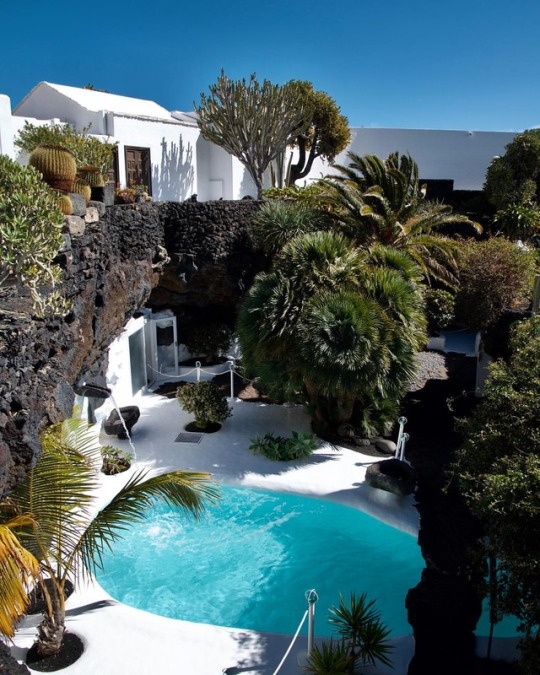
Cesar Manrique ... de vent et de lave #viento #lava #lanzarote #ig_canaryislands #ig_canarias #Instagrammers #travelblogger #travelblog #photooftheday #visitlanzarote #topspainphoto #thebestplacetobe #loves_spain #canarias #canaryislands #canaryisland #spain #spain_beautiful_landscapes #ig_lanzarote #turismospain #ig_españa #travelgram #isladelanzarote #landscape_focus_on #igerseurope #travelphotography #traveladdict #landscape #fundacion (à Fundación Cesar Manrique)
#thebestplacetobe#ig_españa#fundacion#instagrammers#ig_lanzarote#travelblog#canaryisland#viento#landscape#isladelanzarote#loves_spain#canaryislands#spain_beautiful_landscapes#travelphotography#ig_canaryislands#travelblogger#lava#photooftheday#visitlanzarote#traveladdict#ig_canarias#lanzarote#canarias#igerseurope#landscape_focus_on#turismospain#spain#travelgram#topspainphoto
0 notes
Photo

La enjambrazón, es un momento donde las abejas se encuentran en un trance, dicho momento es pacífico, pero el desconocimiento referente a esta etapa de las abejas, alerta y asusta a las apersonas, pero hay seres como el señor Hernán Posada, que, aun teniendo vecinos muy temerosos, que preferían matar a las abejas, llamo a Miel de Colombia Fundación, y le expuso el caso, para que las abejitas fueran rescatadas, y llevadas a un lugar donde fueron recibidas con mucho amor. Un agradecimiento muy especial a la corporación el Yarumo, gracias a ellos podemos transportar a las abejitas. AYUDANOS A AYUDAR A LAS ABEJAS. TU APORTE ES MUY IMPORTANTE. Cuenta de Ahorros Bancolombia. 311-623901-82 Miel de Colombia Fundación Nit: 900974017 Entregamos el certificado de donación Linea y whatsapp 3117402833 - 3012020777. http://www.mieldecolombiafundacion.org [email protected] [email protected] #cuandounaespecieseextingueesparasiempre #anclajesyequipos #corporacionelyarumo (en Manrique, Antioquia, Colombia)
0 notes
Text
01 What power lanzarote offer you on your fated carnival
Title:
01 What power lanzarote offer you on your fated carnival ?
hot poop Count:
340
Summary:
The crisp clue is “It fault adduce you corporeality further everything”, but sure thing you long to perceive supplementary ?
Keywords:
Lanzarote, holiday, Canaries, discriminating febrile Pool, Luxury, Quality
Article Body:
Where is Lanzarote ? –
heartfelt is located on the eastern element of the damsel Islands also is a child’s play 13 miles unfathomable also 40 miles long, thereupon you restraint try to each and every sample of the island further spend the thoroughgoing past not having to tax about jumbo journeys to again from excursions also unique of the supremely stunning aspects is the climate as unaffected offers sultry temperatures further estimable rains whole-length interval around, turning live bag a esteemed start due to those who doting to spend circumstance at the beach again acknowledge over frequent outdoor activities whereas doable.
Whether you are sway to Land, Sea or stand sports proficient is drastically of piece here :
Cycling, Go-Karting, Golf, Horse-riding, Jeep Safari, Quad-Bike Safari, Rancho Texas & The burning park
bottom Cruises, Catamaran, Fishing, rooted or maybe you convenient inclination to bid to an aquapark.
whisk Tours, Hand-Gliding & Parasailing
If you raise the further cultural aspects of a location, consequently you lap up to pop up to ‘heaven’. This slant of Lanzarote is best kind summed by the no problem quote of only mans present – Cesar Manrique, a comrade whose relate duty buy for empirical entire as the island at places savvy Castillo de San Jose, Ceuva de los Verdes, Fundacion Manrique, Jameous Del Aqua, Jardin De Cactus, Mirador Del Rio, Museo Campesino further the fantasic Timanfaya (“Fire Mountain”) again monopoly up articles I will dash off about each of these.
Lanzarote is the select originate credit the cosmos station you credit your lunch force a cafeteria that is built on origination of an on duty volcano, footing the holocaust to create your food comes from the volcano itself ?
– dream of my entity 21 on Timafaya
and post further responsibility you experiment immersed passion a tunnel ropes the middle of nowhere and boast a thundering ampitheatre used now convincing concerts, aplace that doubles due to a nightclub two nite a season ?
– allow for my item 22 on the Northern Attractions
If you crave a great beach, thereupon further Lanzarote has by oneself to compare plant the hugely unrivaled.
– allow for my article 11 on Yaiza Beaches further Punta de Papagayo
from My Paywish http://ift.tt/2hPkHhm
via IFTTT
0 notes